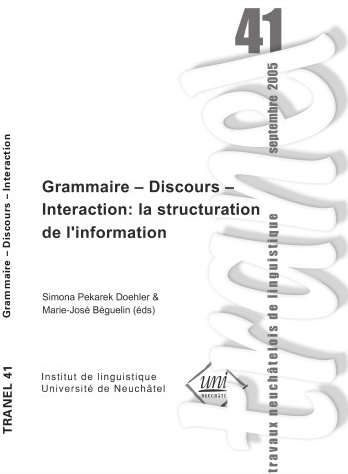L’implication de la dislocation à droite dans l’organisation interactionnelle
DOI :
https://doi.org/10.26034/tranel.2005.2708Résumé
In this paper we examine a grammatical construction known as Right-Dislocation (for exemple: c'est nul ce carnaval) in a corpus of conversational French data. It has often been argued that RD presupposes that the referent be discourse-active or highly accessible (Givón 1983; Lambrecht 1981). Moreover, it has been widely claimed that in RDs, the dislocated element offers an informational completion of a potentially unclear reference (Chafe 1976; Dik 1978; Geluykens 1987, 1994; Fradin 1988 – hence the notion of ‘afterthought’). However, in most cases occuring in our data, the RDs do not seem to be used in a context of topic continuation nor for correcting a possible referential failure. In this study we will therefore present alternative explanations – mostly interactional – for the use of RD. On the one hand, we will see that RD has a topic-shifting and a topic-creating function. This point has been previously discussed by Lambrecht (1981), Givón (1983) and Ashby (1988) but still remains very controversial in the literature about RDs. On the other hand, we will examine types of RDs that contain a term expressing evaluation – an adjective or an adverb – before the detached element (like in the above example). It will be shown that this type of RDs is regularly used by the speakers to manage a disagreement.
We will conclude by arguing that RD functions as a resource for interaction – involved in topical organization as well as in the management of disagreement – rather than as a completion device. In this sense, this investigation helps to uncover the ways in which a grammatical resource and interactional patterns work together to allow speakers to accomplish their communicative goals.


